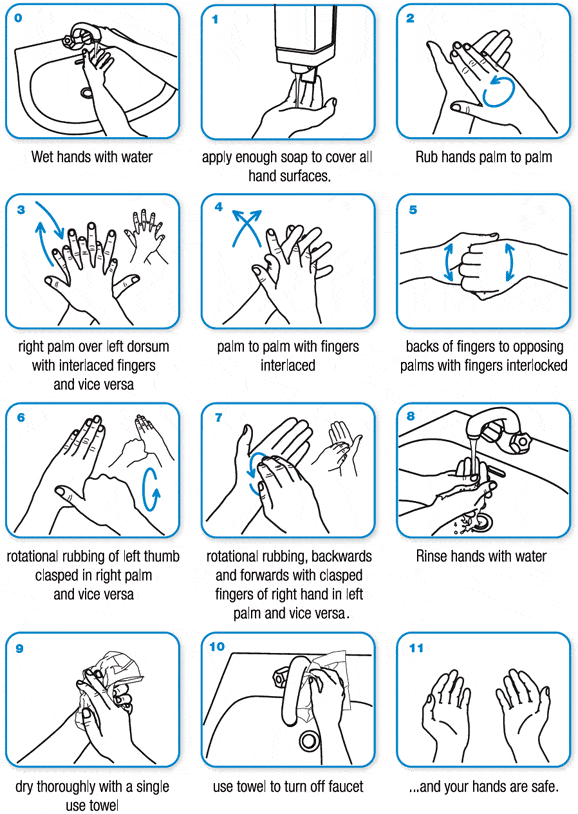In 1847, Dr Ignaz P. Semmelweiss, a Hungarian obstetrician, realized that the occurrence of infections and mortality in newborns could be considerably reduced by practicing proper hand hygiene. As this was before the confirmation of the germ theory by Louis Pasteur, Semmelweis could not give any acceptable scientific explanation for his discovery. He was committed to an insane asylum by his colleagues when they became offended by his attempt to promote better hand-washing habits among them. His realization earned widespread acceptance within a few years of his death.
Washing hands has been proven to be able to significantly decrease the spread of so many diseases. Poor hand hygiene practices are the primary cause of many illnesses, starting with the common cold to more grave infections such as meningitis, hepatitis A, and many varieties of infectious diarrhea.
However, most people take less than 10 seconds to wash their hands. They wash mostly the palms of their hands and usually miss the remaining areas. Fingertips hold more bacteria than the palms, and there is a germ stronghold under your nails.
The Horrifying Truth
Most people assume that the transference of diseases by “touch” means getting infected by being in physical contact with an infected person. But the fact is “touch” primarily refers to touching your own mouth, eyes, and nose, or the touching of food you are about to consume with your own contaminated unwashed hands. This “touch” transfers approximately 80% of communicable diseases.
The number one cause of child mortality is pneumonia. Respiratory illnesses like the common cold, the flu, and pneumonia can be communicated by touching your face with contaminated hands. The second-most widespread cause of childhood death is diarrhea. Touching food with unwashed hands can lead to diarrhea and other food-borne infections like E. Coli, Salmonella, and Staph. Washing your hands can decrease diarrhea rates by at least 40%.
The two most crucial times for washing your hands are after using the bathroom and before handling food. But the horrifying truth is that only 20% of people actually wash their hands before touching food. Any area you touch in a bathroom, from the door handle and the flush knob to the faucet, is covered with germs. When a toilet is flushed with the lid open, bacteria such as E. Coli and Staph float in the fine mist which finally settles, covering every inch of the bathroom. The percentage of women washing their contaminated hands after a toilet jaunt is just 75%, while it is a shocking 50% for men.
The WHO Steps to Clean and Safe Hands
The World Health Organization recommends the following effective hand-washing technique and outlines the following steps. This is much more effective than “Apply soap all over your hands and wash it off.”
Though ideally you should wash your hands for at least 30 seconds, the minimum recommended time is 15 seconds.That extra 15 seconds can remove 10 times more bacteria. Using an alcohol-based hand sanitizer for just 30 seconds can kill the same amount of bacteria as two whole minutes of washing your hands with soap and water.
Featured photo credit: Flickr via flickr.com














































